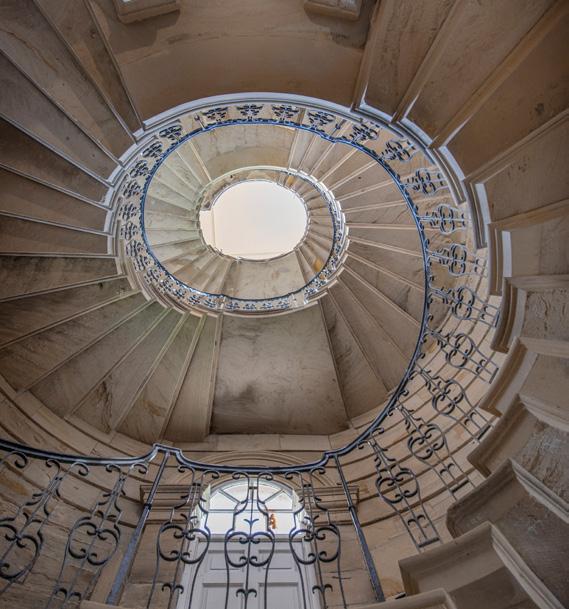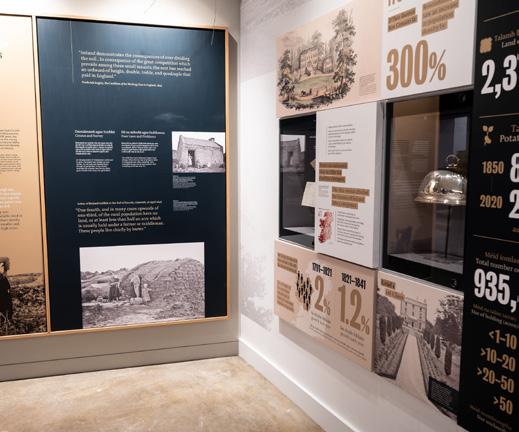
3 minute read
News from Now
National Trust re-builds from ashes of 1822 fire
THE SOUTH SIDE OF SEATON DELAVAL HALL
Advertisement
The fire that devastated Seaton Delaval Hall, 10 miles from Newcastle-uponTyne, on a January afternoon in 1822 was so fierce that it looked like a brilliant sunset to sailors off the Northumberland coast.
The east and west wings of the stately home were saved, but the central block was wrecked, with molten lead raining down from a roof that remained open to the elements for the next 40 years, and an extension so badly damaged it was demolished. A £7.8mproject funded in part by a £3.7m grant from the National Lottery Heritage Fund has addressed some of the hall's most urgent needs. Fire damage and wear and tear during the past 200 years
National Trust Upcoming events Hall and Estate map Directions - Google maps The Avenue, Seaton Sluice, Northumberland, NE26 4QRW
has been tackled, and 21st century improvements added, providing disabled access, toilets, a cafe and play area. Now Seaton Delaval is open to visitors again from 22 June, providing unprecedented access to a house designed by Sir John Vanburgh, the architect of Castle Howard and Blenheim Palace, and finished in 1728. The house was home then to the 'gay Delavals', a family whose antics would fill the columns of newspapers today, with wild parties, 'riotous living', theatrical performances, pranks, gurning contests and competitions to bite the

THE HALL'S CANTILEVER STAIRCASES
heads off sparrows. Seaton Delaval Hall was NATIONAL TRUST IMAGES | COLIN DAVISON PHOTOGRAPHY acquired by the National Trust in 2009, opened to the public in 2010, closed during the pandemic, but remained open in part to allow visitors to see renovation and conservation in progress. This has included work on two stunning cantilever staircases and on paintings, re-roofing of the west wing, fitting a new heating system, using breathable paint to return stone colouring to something like the original, and re-planting gardens. But very visible signs of the fire remain on the hall's structure to remind visitors what happened 200 years ago.
Famine museum to re-open in July
Ireland's National Famine Museum is set to open its doors again in early July, after a €5 million renovation project to transform it into a state-ofthe-art facility.
The Irish Heritage Trust, which manages the property in the north-western county of Roscommon, promises that the revamped museum will offer an immersive experience, blending local and national information about the great famine of the 1840s. The Great Hunger, as it became known, led to more than 1m deaths and mass emigration from Ireland. The island's population still has not reached its 1841 peak of 8m. The scale of later events hugely overshadowed the shocking food shortages 200 reports this month from 1822. The museum is set in the grounds of the 18th century mansion, Strokestown Park. The estate's tenants were impacted by the famine, with many dying or emigrating. Strokestown's notorious landlord Maj. Denis Mahon was shot dead in 1847, a killing that shocked Britain and is credited with hardening opinion against further spending on Ireland.

Wellington's home for Wilkie's art
Scottish painter David Wilkie's people-packed depiction of the news of victory at the battle of Waterloo reaching Chelsea pensioners in London is one of the star exhibits at Apsley House, the Hyde Park Corner home that the Duke of Wellington bought in 1817 as a base to pursue his political ambitions. (In 1822 he is a
Irish Heritage Trust video "Strokestown House home to time capsule of the Great Hunger" - Irish Times Doagh Famine Village, Co. Donegal Irish Famine exhibition, Dublin
member of Lord Liverpool's Tory cabinet.) Exhibits also include Sir Thomas Lawrence's famous portrait of the duke, and George Dawe's of his Waterloo ally, Field Marshal Prince Von Blücher of Prussia.
Apsley House - Wellington Collection History of Apsley House - English Heritage The Royal Academy Summer Exhibition: A Chronicle - 1822 David Wilkie and the summer Exhibition’s first blockbuster - Mark Hallett YouTube video










